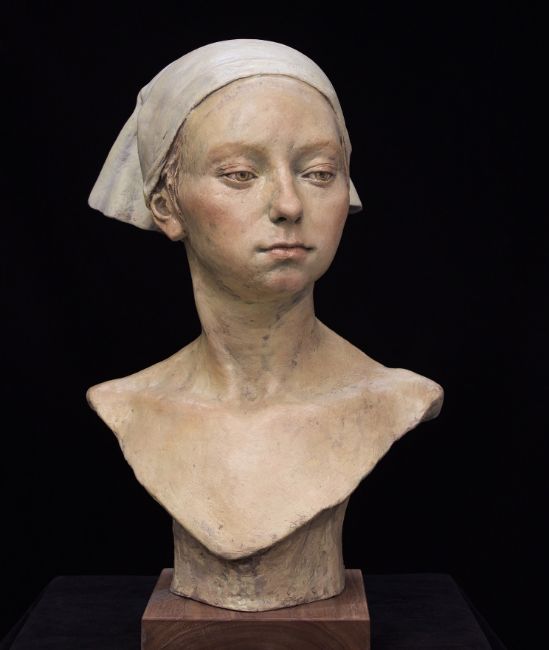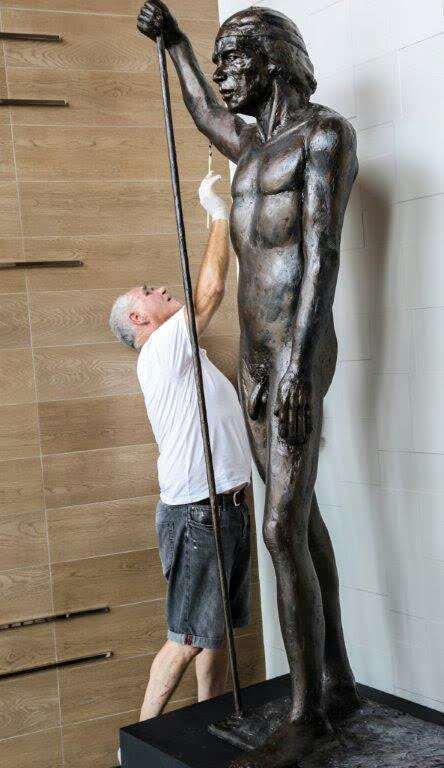The Influence of Nature in Sculpture Art
The impact of nature in sculpture art is a subject that has mesmerized artists throughout history. From ancient civilizations to modern musicians, the environment has offered as a profound source of motivation. This impact appears in the natural kinds and forms that are commonly discovered in sculpture, simulating the curves and contours of nature. Artists likewise explore appearance and products in their job, seeking to recreate the responsive top qualities of the natural globe. Meaning of all-natural components is an additional method which nature influences sculpture, as artists imbue their developments with the definition and associations fundamental in these components. The environment itself, with its landscapes, plants, and animals, is commonly mirrored in sculptures, supplying a link to the globe around us. Ultimately, sculpture art has the power to capture the transience of nature, freezing a moment in time and permitting us to value its elegance in all time.
Organic Forms and kinds
Organic types and forms, inspired by the elaborate patterns and harmonious structures discovered in nature, play a critical role in the realm of sculpture art. Artists have long been captivated by the appeal and complexity of the environment, finding ideas in the elegant contours of a seashell, the fragile flowers of a flower, or the twisting branches of a tree. By copying and extracting these natural forms, artists are able to develop sculptures that evoke a feeling of consistency and equilibrium.
Among the reasons organic kinds and forms are so prevalent in sculpture art is their capability to get in touch with viewers on a deep emotional level. The all-natural world recognizes to all of us, and when we see these kinds stood for in art, it elicits a sense of convenience and acknowledgment. It reminds us of our place in the grand plan of points and allows us to get in touch with something above ourselves.
Additionally, natural forms and shapes in sculpture art frequently personify a feeling of activity and energy. The moving lines and dynamic make-ups resemble the consistent activity and development located in nature. This creates a sense of vigor and brings sculptures to life, making them look like if they can proceed to transform and progress prior to our eyes.
Appearance and Material Exploration
A considerable aspect of sculpture art affected naturally is the exploration of texture and materials through the usage of various strategies and mediums. Musicians often draw ideas from the varied textures located in the all-natural world, such as the harsh bark of a tree, the smooth surface of a pebble, or the complex patterns on a fallen leave. By including these textures right into their job, artists can develop a responsive experience for customers, welcoming them to involve with the art work on a sensory level.
Structure can be accomplished in sculpture with a selection of approaches. Some artists select to sculpt or sculpt directly into the selected material, creating a three-dimensional surface area that imitates the structures located in nature - Robert C Hitchcock Sculptor.
Product exploration is likewise a significant component of sculpture art affected by nature. They may include all-natural components like branches, leaves, or even soil into their sculptures, obscuring the boundaries between art and the setting.
Meaning of Natural Environments
The incorporation of all-natural aspects in sculpture art includes a layer of importance and deepness to the art work. By utilizing materials found in nature, sculptors are able to imbue their productions with meaning that resonates with audiences on an extensive degree. Natural aspects such as wood, rock, and plants have actually been made use of throughout history to convey various symbolic messages.
Wood, as an example, typically represents strength, growth, and resilience. Sculptures crafted from this material can stimulate a feeling of connection to the planet and the cycles of life. Stone, on the various other hand, is commonly related to permanence and endurance. Sculptures carved from rock can signify the ageless nature of specific concepts or concepts.
Flowers and plants are also often integrated into sculpture art, standing for themes of beauty, renewal, and growth. The fragile petals and vibrant colors of blossoms can stimulate sensations of delight, while the linking branches of plants can signify interconnectedness and unity.
In addition to these natural products, artists might also utilize all-natural elements such as fire, wind, or water to better enhance the symbolic message of their art work. These components can stand for the transformative power of nature, the passage of time, or the pressures that form our globe.

Representations of the Environment
Reflections of the Setting can be seen in sculpture art through the unification of natural aspects and the representation of environmental motifs. Artists frequently draw inspiration from the environment, making use of materials such as wood, rock, or even recycled materials to develop their artworks. By utilizing these natural environments, they not only admire the atmosphere but also produce a more powerful connection in between the artwork and its environments.
Along with the materials made use of, sculpture art additionally reflects the environment via the representation of ecological motifs. Lots of artists choose to depict animals, plants, or landscapes in their work, highlighting the elegance and frailty of the natural globe. These sculptures function as reminders of the value of maintaining our atmosphere and the need for lasting methods.

In addition, environmental sculptures typically aim to increase understanding regarding pushing eco-friendly concerns. They function as aesthetic representations of the impact of human activities on the atmosphere, such as deforestation, climate, or air pollution modification. By illustrating these problems in their art work, sculptors wish to motivate visitors to take activity and come to be extra conscious of their very own environmental Figurative Sculptures footprint.
Catching the Transience of Nature
Sculpture artists better check out the impact of nature by masterfully recording the ephemeral and ever-changing aspects of the environment. With their virtuosity, these musicians aim to depict the fleeting charm and transience of nature, stimulating a sense of marvel and consideration in viewers.
One means in which sculpture musicians record the transience of nature is by utilizing materials that are themselves subject to decay and change. For example, artists might select to deal with natural products such as leaves, flowers, or timber, which naturally wear away in time. This intentional selection highlights the brevity of nature and advises us of the unavoidable cycle of life and fatality.
In addition, sculpture artists typically utilize techniques that create a sense of activity and fluidness in their job. By integrating flowing lines and vibrant types, they convey the ever-changing nature of the all-natural globe. This can be seen in sculptures inspired by wind, water, or the development of plants, where the artist seeks to record the essence of consistent activity and makeover.
Additionally, some artists choose to create site-specific or momentary installments that connect with the setting. These ephemeral sculptures, made from products such as ice, sand, or light, are purposefully developed to gradually transform or go away with time. By accepting the short-term nature of their productions, musicians invite visitors to review the short lived appeal of the all-natural world and the impermanence of human presence.

Conclusion
Finally, nature has a profound impact on sculpture art. Through using natural kinds and forms, musicians are able to evoke a feeling of natural appeal and harmony. Appearance and material exploration better improve the connection to nature, as artists typically include natural products into their sculptures. Meaning of all-natural aspects includes deepness and suggesting to the artwork, while reflections of the environment capture the significance of nature. Eventually, sculpture art records the transience of nature and celebrates its eternal influence.
Meaning of natural components is one more means in which nature influences sculpture, as artists imbue their productions with the meaning and associations integral in these elements.A considerable aspect of sculpture art affected by nature is the expedition of texture and materials via the use of various methods and tools (Bronze Sculptures).Product expedition is additionally a significant part of sculpture art affected by nature.One means in which sculpture musicians capture the transience of nature is by utilizing materials that are themselves subject to decay and adjustment. Texture and material exploration additionally improve the link to nature, as musicians often integrate natural materials into their sculptures